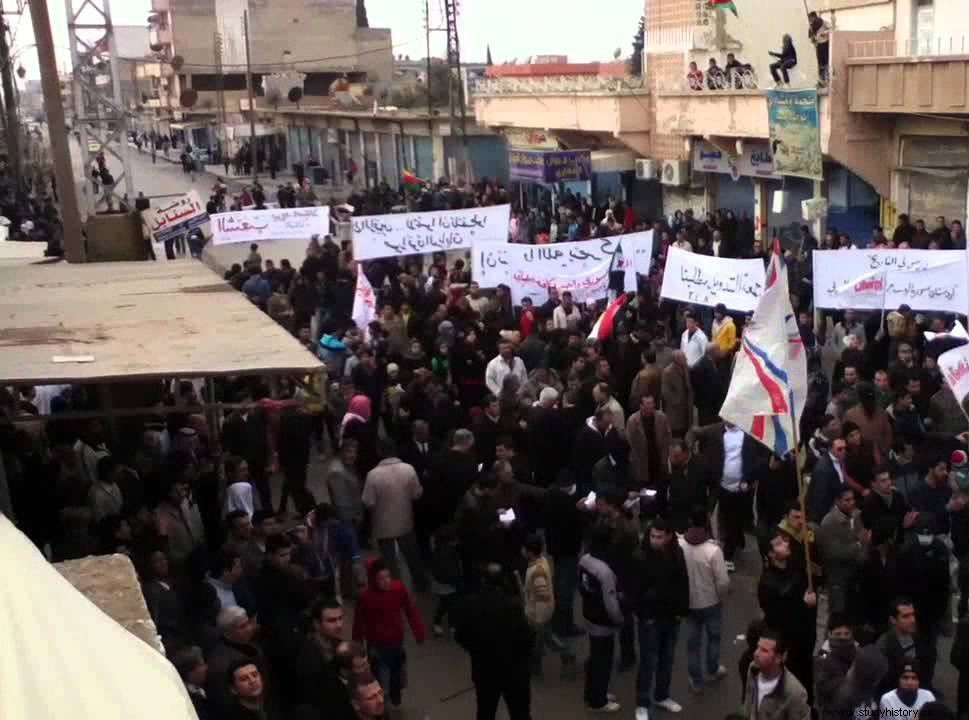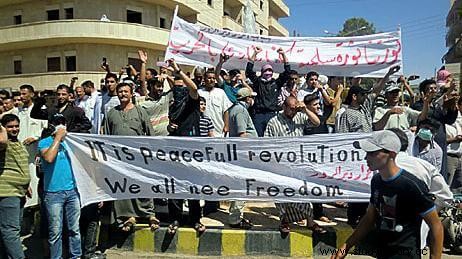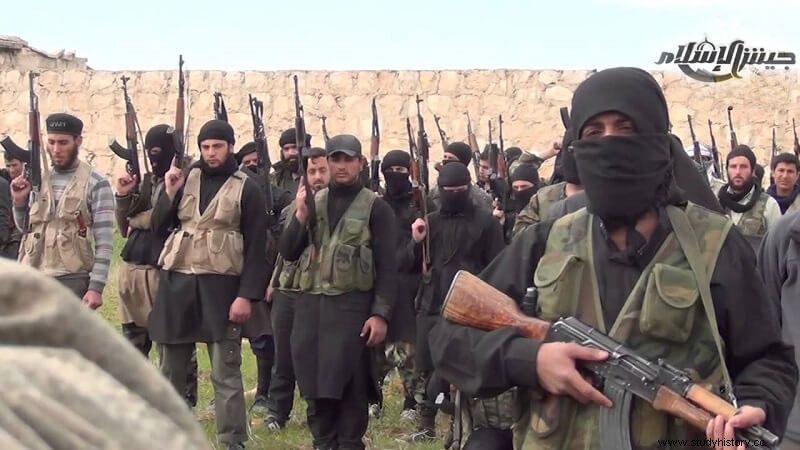The history of revolutions almost always revolves around great characters. Ideologists, politicians and soldiers, the order is not random, although any of them can be framed in various categories, who succeeded or failed and whose stories and actions then serve as the backbone of the narration of the events. However, it is important not to forget that in front of someone who speaks there must be many who listen, and that every movement is necessarily made up of people, a large number of them, who organize, work, build, succeed or fail in battles. that will not go down in history, like getting, day after day, some vital food or medicine. The same thing has developed in the revolution that led to the Syrian Civil War.

During the Syrian Civil War, at the same time When the demonstrations against the regime began, the Tanseequiyat, or coordination committees emerged. , which at first were a purely local affair. As defined by Robin Yassin-Kassab and Leila al-Shami in Country on Fire , were groups of five or six people who knew each other, circles of trust that began to work in secret to foment opposition to the regime, and that also, as time passed, began to contact other similar groups. Each one of them had its own ideology, the result of which its components professed, and between left and right, religiosity and secularism, the result was a multicolored mosaic that perhaps demonstrates another of the affirmations of the cited authors:the revolution originated on the streets and it never split, because it was never monolithic.
The daily life of those who were part of these cells involved significant sacrifices, as many left their jobs, or their careers, to be able to fully dedicate themselves to their new vocation. What was this? Basically, organizing the resistance in their communities, inventing slogans, preparing banners for the demonstrations, building barricades to protect the flanks of the large columns of people that were walking the streets and, above all, documenting everything that happened and uploading it to social networks. . More than any other, the Syrian conflict is also unfolding on the internet (the present, let's not forget, is terribly relevant here). The start of the Syrian Civil War partially changed the role of these groups, which also set about organizing makeshift field hospitals and collecting and distributing food and medicine, especially to take it to neighborhoods that had been besieged by the government.

Maybe a bit later, but in parallel , the Local Coordination Committees emerged , which are part of a more centralized organization and whose origin seems to date back to March 16, 2011, during a protest outside the Ministry of the Interior to demand the release of political prisoners in which various civil leaders had the opportunity to speak and they commissioned several people, including themselves, to return to their places of origin and organize them. Without a doubt, it was a more connected organization, a little above the base movements, but equally valuable and with somewhat different functions:putting the small revolutionary units that operated in each sector in communication, synchronizing the political vision of all them to all work for the same goal and, above all, to document and transmit –once again– the abuses of the regime. Initially ignored by the large pan-Arab networks, social networks became their great allies and one of the missions of the committee members became to travel around the country to teach the population about the management of the webcam or about how to upload recordings from mobile phones to the network.

Politically, the committees tried to coordinate all the options who opposed the regime through collective action and non-violence. However, his own idealism would ultimately be a source of disagreement. The different political and religious options did not take long to compete; and it was also difficult to abstract from the social roles developed during the old regime. Gradually discussions arose among its components:the younger revolutionaries did not always agree with the traditional leaders; and on more than one occasion an attempt was made, despite all the pressures and arguments against it, to exclude women from decision-making. The militarization of the Syrian Civil War, which the Local Coordination Committees had always tried to oppose, marked the beginning of its decline. “In an unprecedented move over the last few days, Syrians in Syria and abroad have called for the population to take up arms, or for international military intervention […] Although we understand the motivation for take up arms or call for military intervention, we specifically reject this stance as we find it politically, nationally and ethically unacceptable.” (Statement of the Local Coordination Committees of October 29, 2011, quoted in Robin Yassin-Kassab and Leila al-Shami, Country on fire , p 131).
Another serious problem they had to deal with was the religious divide. "Freedom is my sect" was one of the most important slogans of these groups, which referred to the fact that as much as they wanted to consider the Syrian conflict as a mere religious conflict, it was not. There are many testimonies from Christians, Alawites, Shiites or Sunnis, to name the most important groups, who participated in the committees, and there are increasing indications that the regime of Bashar al-Asad could have managed the religious differences of the Syrians in his country, although certainly not all the ills have been the fault of the Government. At this point, it is difficult to write history without people, especially since, in this case, the “Duma Four” are sadly famous:Razan Zaitune, a lawyer, a human rights activist since long before the Syrian Civil War and winner of several awards in this field; Wael Hamadeh, also an important activist and husband of the former; Shamira Jalil, a defender of women's rights, who had spent four years in the regime's prisons (1987-1991) and Nazem Hamadi, a poet and also an activist. All of them disappeared on the night of December 9, 2013 from the two flats they shared in the Duma neighborhood in Damascus, presumably kidnapped by Jaish al-Islam, one of the radical Islamic factions that are part of the rebellion against the regime. of al-Asad who unleashed the Syrian civil war and who, however, has decided to attack those who, supposedly from his own side, do not profess his ideas. To date his whereabouts are unknown.

Perhaps the Local Coordination Committees have been unable to pass the test, and currently, like the rebellion that was its origin and that led to the Syrian Civil War, they are in low hours.
